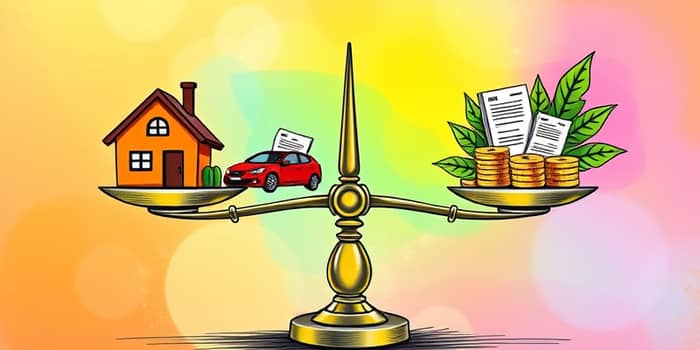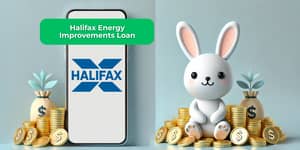Embarking on a journey toward financial freedom often means making critical decisions about how to fund your dreams without jeopardizing your future stability. Choosing between debt and equity financing in your personal finances is more than a numbers game; it’s a deeply personal crossroads that reflects your goals, tolerance for risk, and life stage.
In this comprehensive guide, we’ll explore the definitions, uses, and strategic considerations for debt and equity, providing you with the tools to create a balanced funding approach tailored to your unique circumstances.
Understanding Debt and Equity
Debt represents money borrowed that must be repaid with interest. Common forms include mortgages, auto loans, credit cards, and student loans. When you take on debt, you incur a legal obligation you are required to fulfill, with payments that are subject to a fixed repayment schedule.
Equity, on the other hand, refers to an ownership stake in an asset. In a personal finance context, this can mean home equity built over time, investments in stocks, or partnership interests in a private venture. Using equity shifts some risk to investors, who share in future profits but also affect your decision-making.
Personal debt often carries interest rates ranging from 3% for mortgages to over 20% for consumer credit cards, influencing cost-effectiveness. Meanwhile, equity opportunities like the stock market may yield average long-term returns near 7-10%. Understanding these figures helps frame your decision on whether to borrow or invest.
Key Differences at a Glance
Understanding the fundamental contrasts between debt and equity can clarify which path aligns better with your financial priorities. Below is a concise comparison:
While debt is appealing for immediate access to high-cost assets, equity shines when you seek growth potential without the pressure of fixed payments. Recognizing how each aspect fits into your overall plan is the foundation of wise financial management.
Weighing Advantages and Disadvantages
Every funding choice has trade-offs. Evaluating the pros and cons of debt versus equity helps you make informed decisions that support your long-term objectives.
Choosing debt or equity impacts not just your balance sheet, but also your lifestyle, stress levels, and future flexibility. Carefully consider how each advantage or drawback resonates with your personal and professional aspirations.
- Retain full ownership and control when you choose debt financing.
- Known repayment schedule provides certainty for budgeting and planning.
- No scheduled repayments required when leveraging equity investments.
- Share future profits with investors, reducing your personal risk burden.
- Debt increases financial strain if income becomes unpredictable.
- Equity dilutes your stake and influence over decisions.
- Higher interest rates amplify financial risk and cost over time.
- Investor demands may impact your strategic direction.
Cost and Risk Considerations
Balancing the expected returns on your investments against the cost of borrowing is crucial. Comparing expected returns to interest rates will reveal whether to allocate extra cash toward debt reduction or growth opportunities.
For instance, if you borrow $20,000 at a 5% annual rate and expect your investments to return 8%, you could gain an extra $600 per year by investing instead of repaying early. Conversely, a 12% credit card balance would almost certainly warrant an accelerated payoff.
Debt risk centers on default and credit score impact, while equity risk hinges on opportunity cost and potential investor influence. A clear understanding of shared risk with outside investors versus personal liability allows you to match financing choices with your comfort level.
Always run the numbers: small differences in rate can translate into hundreds or thousands in real cost over time, so it pays to be precise and proactive.
Balancing Your Personal Capital Structure
Crafting an optimal combination of debt and equity starts with assessing your current financial health. Calculate your net worth by subtracting total liabilities from total assets, and then determine your personal debt-to-equity ratio.
Imagine you have $100,000 in assets and $40,000 in debts. Your debt-to-equity ratio stands at 40%, a moderate level that may be adjusted upward if you pursue property investment or downward as you approach major life events.
This ratio should be revisited annually or after significant changes, ensuring you remain aligned with your evolving goals and market conditions.
Practical Steps to Take
Transforming theory into action involves tracking cash flow, monitoring balances, and making disciplined decisions. Follow these steps to stay on course:
Track income, expenses, and savings goals using a dedicated budgeting tool or spreadsheet. Record each debt repayment and investment contribution to maintain clear visibility of your progress.
Start by listing all assets—savings, investments, property values—and total each. Then compile liabilities including loans, credit balances, and any other obligations. The net worth formula is simple:
Net Worth = Total Assets − Total Liabilities
Applying the rule of thumb—pay down debt with interest above 6% before investing—helps channel resources where they matter most. Conversely, low-rate borrowing can unlock opportunities for wealth growth through timely investments.
Real-world Applications and Strategic Insights
Consider a young professional who takes on a student loan to pursue higher education. By responsibly leveraging debt, they accelerate their career prospects and increase future earnings potential. Over time, disciplined payments build credit history and financial resilience.
Another homeowner uses a home equity line of credit to fund renovations. If the improvement boosts property value by more than the borrowing cost, the leverage works in their favor. However, if market values decline, they could find themselves owing more than the home’s worth.
Equity investments, such as buying shares in a blue-chip company, offer dividends and capital appreciation, but they also expose you to market cycles. A diversified approach can mitigate these swings and balance the inherent volatility of equity markets.
By weaving these examples into your strategy, you cultivate financial resilience, exploiting opportunities while safeguarding against downside. The ultimate goal is a portfolio that supports your life ambitions—whether that means early retirement, a secure family home, or launching a passion-driven business.
In closing, the art of balancing debt and equity is not static; it evolves with your personal story and economic climate. Embrace the challenge of crafting a funding strategy that is both prudent and optimistic, and you’ll pave the way for achievements that resonate far beyond numbers on a spreadsheet.
References
- https://courses.lumenlearning.com/suny-personalfinance/chapter/2-3-debt-and-equity/
- https://www.investopedia.com/ask/answers/042215/what-are-benefits-company-using-equity-financing-vs-debt-financing.asp
- https://www.mtb.com/business/business-education-portal/how-to-finance-your-small-business/debt-financing-vs-equity-financing-options
- https://preferredcfo.com/insights/debt-vs-equity-financing
- https://growthlending.com/knowledge-bank/the-difference-between-debt-financing-and-equity-financing
- https://eoxs.com/new_blog/how-to-balance-debt-and-equity-in-financial-planning/
- https://www.investopedia.com/terms/f/financial_plan.asp
- https://www.fidelity.com/learning-center/personal-finance/pay-down-debt-vs-invest










